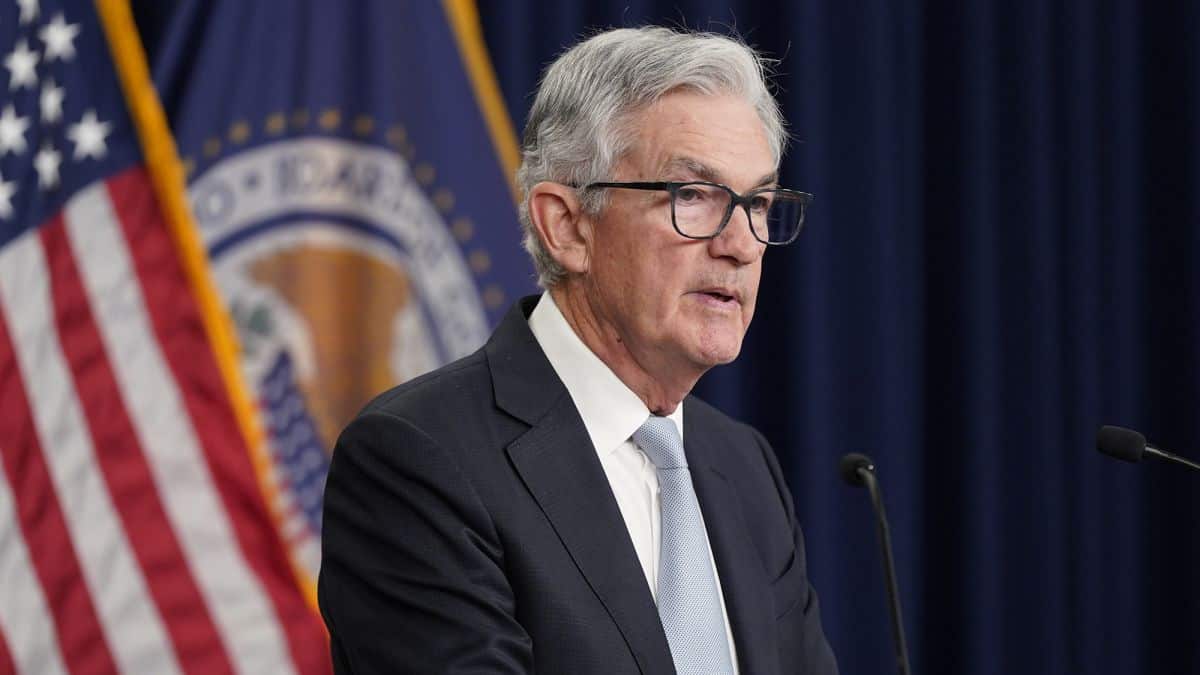Federal Reserve Chairman Jerome Powell said Wednesday that recent turmoil in the banking sector will further tighten credit for U.S. households and businesses, taking a toll on economic growth.
“Such a tightening in financial conditions would work in the same direction as rate tightening,” Powell told reporters during a press conference in Washington. “You can think of it as being the equivalent of a rate hike or perhaps more than that.”
His comments came shortly after policymakers delivered another quarter-percentage point rate hike, lifting the benchmark funds rate to a range of 4.75% to 5%, the highest since 2007. It marked the ninth consecutive rate increase aimed at combating high inflation.
Fed officials are in the midst of the most aggressive tightening campaign since the 1980s as they try to crush inflation still running about three times higher than the pre-pandemic average. Before the spate of bank collapses earlier in March, the Fed had considered raising rates by a half-percentage point in the face of strong economic data, Powell said Wednesday.
But the stunning implosion of Silicon Valley Bank earlier this month complicated the Fed’s efforts because the rapid rise in interest rates played a direct role in the bank’s failures. Increasing interest rates threatens to exacerbate instability within the financial system.
Policymakers said it is too soon to say how banking sector stress will affect the broader economy.
“Financial conditions seem to have tightened and probably by more than the traditional indexes say,” Powell said. “The question for us, though, is how significant will that be — what will be the extent of it, and what will be the duration of it?
“We’ll be looking to see how serious is this and does it look like it’s going to be sustained. And, if it is, it could easily have a significant macroeconomic effect, and we would factor that into our policy decisions.”
Silicon Valley Bank largely catered to tech companies, venture capital firms and high net worth individuals pulling cash at a rapid pace as the once red-hot tech sector cooled. When the bank announced it was trying to raise capital from investors and that it would take a $1.3 billion loss on long-term securities that had tumbled in value amid higher interest rates, depositors panicked and a bank run ensued.
Within days, U.S. regulators took extraordinary steps to contain the fallout from the bank’s collapse and shore up wavering confidence in the financial system, including protecting all deposits at the two institutions — even those holding funds that exceeded the FDIC’s $250,000 insurance limit.
The Fed also launched a new emergency backstop for lenders to help them meet deposit withdrawals under favorable terms.
Still, the banking crisis has reignited fears over a looming recession this year, with experts warning that a downturn is increasingly likely as borrowing could become more expensive.
Powell indicated he believes there is still a path to a so-called “soft landing,” getting inflation down without triggering a recession.
“There’s a pathway to that,” he said. “It still exists. We’re certainly trying to find it.”

